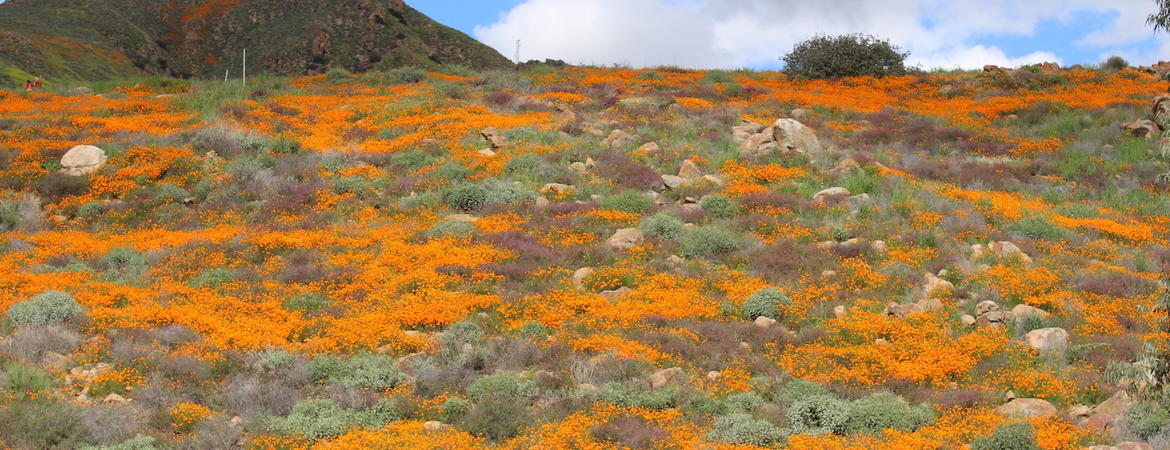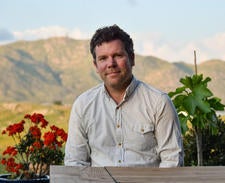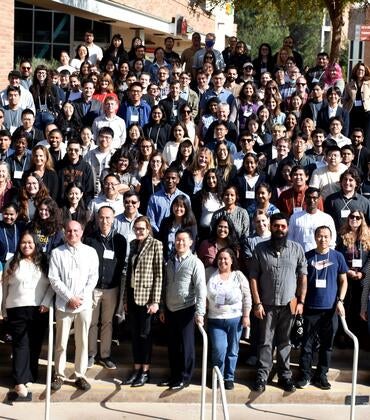Plants are not simply flowering earlier with climate change, as is often reported in the media. Instead, they are responding to the changing climate in more complex ways. The rates at which communities of plants are shifting their flowering times differ greatly in different locations, even when those locations are only a couple hundred meters apart.
These complex changes mean that animals that depend on flowers, such as pollinators, have to deal with a new landscape of floral resource availability. Changes in flowering patterns also mean plants of the same species may be less likely to exchange pollen, reducing gene flow.
“As the timing of flowering changes, interactions with other species are likely to be altered, and effects may cascade throughout the community,” said Nicole Rafferty, an assistant professor in UC Riverside’s Evolution, Ecology, & Organismal Biology Department. “Pollinators, such as bees and hummingbirds, might need to adjust their foraging behaviors to track this new sequence of flowering times across the landscape.”
Rafferty and Jeff Diez, an assistant professor in the Botany and Plant Sciences Department, were part of a trio that helped test whether the timing of flowering is becoming increasingly different among populations within species and among five communities comprising 590 species.
Their work was published recently in the journal Current Biology.
The team used a 33-year-long dataset spanning a 1,267-meter, semi-arid landscape in the southwestern United States. The data was collected by co-author Dave Bertelsen, who surveyed the transect almost weekly, hiking the 8-km-long trail more than 1,600 times since 1984, each time recording every plant species in bloom. They tested for changes in year-round flowering and showed that flowering has become earlier for all communities except at the highest elevations.
However, flowering times shifted at different rates across elevations likely because temperature and precipitation have changed differently at those elevations, indicating flowering times have grown further apart or, in some cases, closer together within neighboring plant communities. The interval between flowering times of subpopulations of individual species also lengthened at mid-elevation but shortened at high elevation.
These changes in flowering phenology among communities and subpopulations are undetectable when data are pooled across the gradient. Furthermore, they show that nonlinear changes in flowering times over the 33-year record are obscured by traditional calculations of long-term trends.
These findings reveal greater variety of plant responses over time and across space than previously recognized. They also indicate climate is driving phenological reshuffling across small geographic areas.






